Windmill air conditioners are eco-friendly, energy-efficient solutions designed for sustainable cooling. With 60 years of expertise, they offer innovative features like antimicrobial filters for cleaner air.
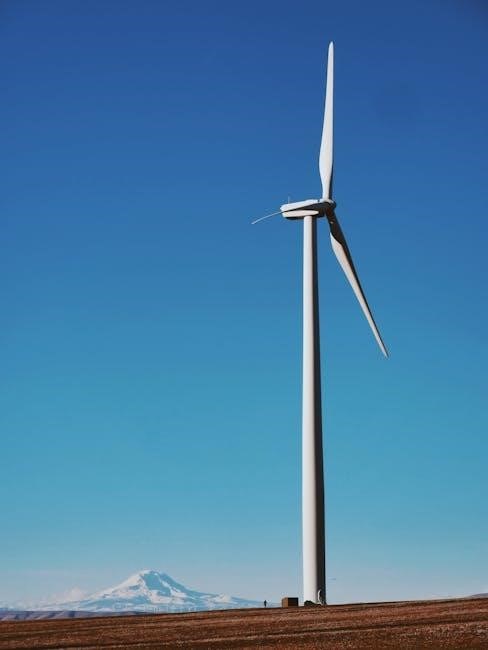
Popular Windmill Air Conditioner Models
Windmill offers several popular air conditioner models, including the 08W2Wi, W1W31, and 10W2Wi, known for their energy efficiency and eco-friendly designs, ideal for various spaces.
2.1. Windmill 08W2Wi
The Windmill 08W2Wi is an 8,000 BTU window air conditioner, designed for efficient cooling. It features an antimicrobial filter, energy-saving mode, and quiet operation. With a high EER rating, it reduces energy consumption while maintaining performance. Its compact design fits most windows, and the included installation kit ensures easy setup. The unit is also known for its eco-friendly design, aligning with Windmill’s commitment to sustainability. Users praise its durability and effectiveness in maintaining cool temperatures during summer months, making it a popular choice for small to medium-sized rooms.
2.2. Windmill W1W31
The Windmill W1W31 is a high-performance air conditioner known for its reliability and innovative cooling technology. Designed with user convenience in mind, it features an antimicrobial filter to improve indoor air quality and reduce allergens. Its compact design and easy installation process make it a popular choice for homeowners. The W1W31 offers efficient cooling with minimal noise, making it ideal for small to medium-sized rooms. With a focus on energy efficiency, this model ensures optimal performance while keeping energy costs low. Its durable construction and low-maintenance design make it a long-lasting solution for summer comfort.
2.3. Windmill 10W2Wi
The Windmill 10W2Wi is a high-capacity air conditioner designed for larger spaces, offering powerful cooling and advanced features. It is known for its energy-efficient performance and eco-friendly design, making it a popular choice for homeowners seeking reliable cooling solutions. The 10W2Wi model features a robust cooling system and intuitive controls, ensuring optimal comfort. Its installation process is straightforward, with clear guidelines provided in the manual. This model is ideal for those needing a strong cooling solution without compromising on energy efficiency or environmental impact. Its durability and advanced technology make it a standout option in the Windmill lineup;

Key Features and Benefits of Windmill Air Conditioners
Windmill air conditioners offer energy efficiency, eco-friendly designs, and antimicrobial filters, ensuring cleaner air and reduced environmental impact while providing reliable cooling performance and cost savings.
3.1. Energy Efficiency
Windmill air conditioners are designed with advanced energy-saving technology, optimizing cooling while minimizing power consumption. Their high-efficiency compressors and smart sensors adjust operations to maintain consistent temperatures, reducing energy waste and lowering utility bills. Eco-friendly refrigerants and intelligent thermostats further enhance their energy performance, making them an environmentally responsible choice for home cooling needs. These features not only contribute to energy savings but also align with global efforts to reduce carbon footprints and promote sustainable living.
3.2. Eco-Friendly Design
Windmill air conditioners feature an eco-friendly design that prioritizes sustainability and environmental responsibility. Built with recyclable materials and energy-efficient components, these units minimize environmental impact while providing effective cooling. The use of eco-conscious refrigerants and advanced insulation reduces emissions and promotes greener cooling solutions. Their design aligns with global efforts to combat climate change, offering homeowners a guilt-free way to stay comfortable. By integrating sustainable practices into their manufacturing and operation, Windmill air conditioners set a new standard for environmentally friendly home appliances.
3.3. Antimicrobial Filter
The antimicrobial filter in Windmill air conditioners is a key feature designed to enhance indoor air quality. This filter captures dust, pollen, and other airborne particles, preventing them from circulating in the room. Additionally, its antimicrobial properties inhibit the growth of bacteria, mold, and mildew, ensuring cleaner and healthier air. Regular maintenance, such as cleaning the filter every couple of weeks, is essential to maintain its efficiency and effectiveness. By improving air purity, the antimicrobial filter contributes to a more comfortable and hygienic environment, making it ideal for homes and spaces prioritizing health and well-being.

Installation Steps for Windmill Air Conditioners
Installing a Windmill AC involves preparing the window, positioning the unit, extending side panels, and attaching cosmetic panels for a secure and clean finish.
4.1. Preparing the Window
Before installing your Windmill air conditioner, ensure the window is clean and free of debris. Check for proper sealing to prevent air leaks. Measure the window width to confirm compatibility with the AC’s side panels. Remove any obstructions or dividers to ensure smooth operation. If necessary, adjust the window frame to accommodate the unit’s dimensions. Proper preparation ensures a secure fit and optimal performance. Always follow the manufacturer’s guidelines for window readiness to avoid installation issues.
4.2. Positioning the AC
Place the Windmill air conditioner on a firm, level surface in the window opening. Ensure the unit is centered and evenly distributed for stability; Check that the drain holes are unobstructed to prevent water accumulation. Align the AC with the window frame to ensure proper sealing and airflow. Secure the unit tightly to avoid movement during operation. Proper positioning ensures optimal cooling performance and prevents potential damage. Always follow the manufacturer’s guidelines for correct placement to achieve the best results. Improper positioning can lead to inefficiency or safety hazards, so double-check the installation before use.
4.3. Extending Side Panels
After positioning the AC, extend the side panels to fit your window width. Gently pull each panel outward until it aligns with the window frame. Ensure the panels are securely fastened using the provided hardware to maintain a tight seal. Check that the panels are evenly extended and properly aligned for a snug fit. This step ensures minimal air leakage and optimal cooling performance. Once extended, verify that the panels are firmly attached to the window frame to prevent gaps. Properly extended side panels enhance energy efficiency and overall unit functionality. Follow the manual for specific hardware instructions.
4.4. Attaching Cosmetic Panels
Once the side panels are extended, attach the cosmetic panels to cover any gaps and enhance the unit’s appearance. Align the panels with the edges of the side panels, ensuring a snug fit. Secure them using the provided screws or clips. Tighten firmly to prevent any movement. Properly attached cosmetic panels not only improve aesthetics but also help maintain a sealed environment for efficient cooling. Ensure all edges are aligned and fastened securely to avoid air leaks. Follow the manual’s specific instructions for your model to achieve a clean, finished look. This step completes the installation process, ensuring optimal performance and visual appeal;

Maintenance and Cleaning Tips
Regular cleaning of the air filter and checking for blockages ensure optimal performance. Remove the front grille, clean the filter, and ensure proper airflow for efficient cooling.
5.1. Cleaning the Air Filter
To clean the antimicrobial air filter, remove the front intake grille by pulling it from the bottom. Gently vacuum or rinse with water to eliminate dust and debris. Ensure the filter is dry before reinstalling to prevent mold growth. Regular cleaning every couple of weeks improves airflow and efficiency, ensuring your Windmill air conditioner performs optimally while maintaining indoor air quality.
5.2. Checking for Blockages
Regularly inspect the air conditioner’s grille, drain holes, and exterior for debris or obstructions. Blockages can reduce airflow and efficiency. Ensure the antimicrobial filter is clean and properly installed. Check the window seal for gaps, as leaks can compromise performance. If water accumulation occurs, verify that the unit’s internal drainage system is functioning correctly. Addressing blockages promptly prevents operational issues and maintains optimal cooling efficiency. Always refer to the manual for specific guidance on clearing blockages safely and effectively.
5.3. Exterior Cleaning
For exterior cleaning, gently wipe the unit’s casing with a damp cloth to remove dirt and dust. Avoid using harsh chemicals or abrasive materials, as they may damage the finish. Clean the grille and external vents to ensure proper airflow. Regularly inspect and clear debris from the drain holes to prevent water accumulation. Ensure the condenser coils are free from obstructions for efficient cooling. Always unplug the unit before cleaning to avoid electrical hazards. Proper exterior maintenance enhances performance and extends the lifespan of your Windmill air conditioner.
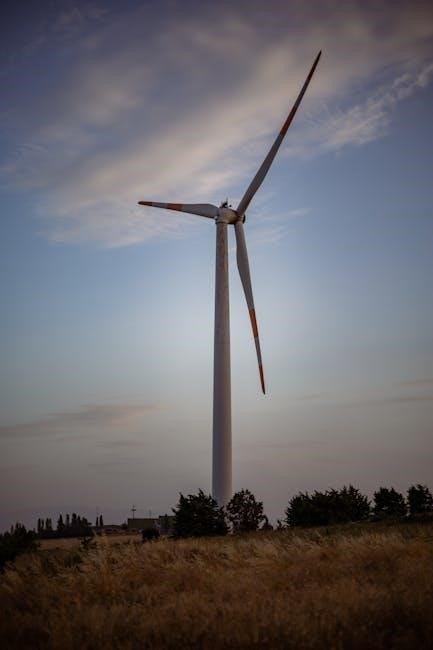
Troubleshooting Common Issues
Identify and resolve common issues like strange noises, water leaks, or airflow problems by checking for blockages, inspecting internal components, and ensuring proper installation and maintenance.
6.1. Strange Noises
Strange noises from your Windmill air conditioner may indicate issues like loose internal components or blockages. Check for debris in the vents or compressor. If the noise persists, ensure the unit is properly installed and balanced. Verify that all screws are tightened securely. If the issue remains, consult the user manual or contact a professional. Unusual sounds could also signal worn parts or improper airflow. Regular maintenance, such as cleaning the filter, can help prevent noise-related problems. Always unplug the unit before inspecting internal components for safety.
6.2. Water Leaks
Water leaks in Windmill air conditioners can occur due to improper installation or condensation buildup. Ensure the unit is level and properly sealed in the window. Check for blockages in the drain holes, as these can cause water to accumulate and leak. Regularly inspect the condensate tray and ensure it is functioning correctly. If leaks persist, consult the user manual or contact a professional. Avoid using the unit if water leakage is excessive, as this may damage internal components or lead to electrical issues. Proper maintenance, such as cleaning the drain, can help prevent water-related problems.
6.3. Airflow Problems
Airflow issues in Windmill air conditioners often arise from blocked filters or improper installation. Ensure the antimicrobial filter is clean, as dirt and debris can obstruct airflow, reducing efficiency. Check for obstructions in the vents or grilles, both inside and outside the unit. Verify that the side panels are fully extended and securely attached to the window frame. If airflow remains weak, inspect the condenser coils for dust or dirt and clean them gently. Regular maintenance, such as cleaning the filter every two weeks, can prevent airflow problems and ensure optimal cooling performance. Refer to the manual for detailed troubleshooting steps.
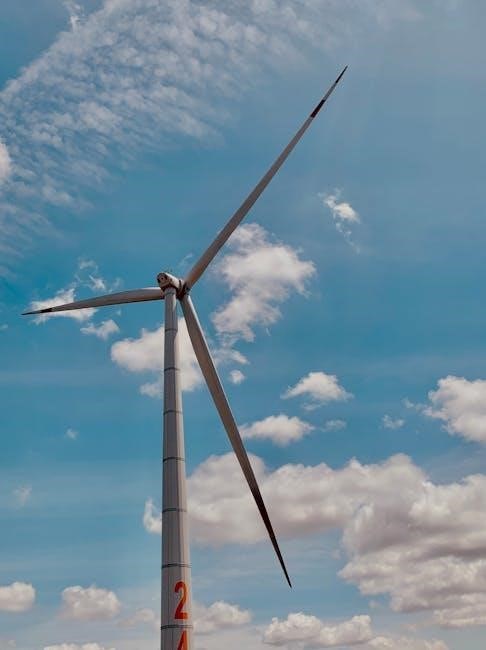
Safety Precautions
Always follow guidelines to avoid risks. Keep heat sources away, ensure proper electrical connections, and check for damage before use to maintain safety and efficiency.
7.1. General Warnings
To ensure safe operation, always follow these guidelines:
- Avoid using heat-generating appliances near the AC to prevent overheating.
- Check for any damage or abnormalities before turning on the unit.
- Keep children away from moving parts and electrical components.
- Do not use the AC as a drainage source; water accumulation is normal for cooling.
- Refer to the manual for specific precautions and proper usage instructions.
Adhering to these warnings ensures optimal performance and safety.
7.2. Electrical Safety
Ensure the unit is installed by a licensed technician to meet safety standards. Avoid using damaged cords or exposing the AC to water. Keep the area clear of flammable materials. If you notice unusual smells or sounds, unplug immediately. Never modify the electrical components yourself. Follow all local regulations and guidelines provided in the manual for safe operation. Regularly inspect the power cord and plug for wear. Do not overload circuits, and ensure proper grounding to prevent electrical hazards.
7.3. Coolant Handling
The Windmill air conditioner uses coolant to regulate internal temperatures. Avoid direct contact with refrigerant fluids, as they can cause skin irritation. If a leak occurs, ventilate the area immediately and contact a professional. Never attempt to repair coolant lines yourself. Keep the unit away from open flames or sparks to prevent hazards. Dispose of any coolant waste responsibly, following local regulations. Do not ingest or expose the coolant to pets or children. Always refer to the manual for safe handling practices and environmental guidelines.
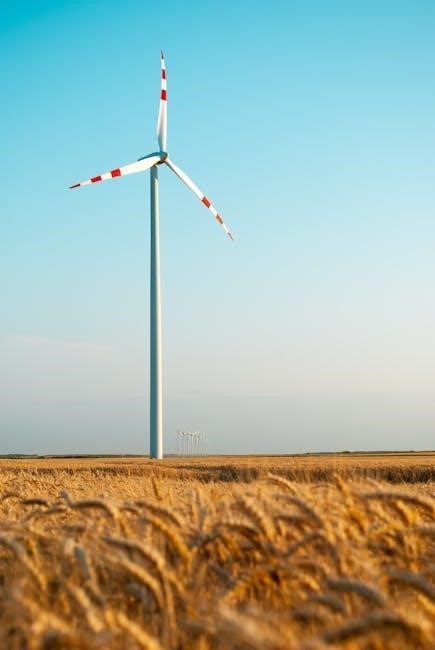
Specific Model Guides
Find detailed guides for popular models like Windmill 08W2Wi, W1W31, and 10W2Wi. Each manual provides tailored instructions for installation, maintenance, and troubleshooting specific to your unit.
8.1. Windmill 08W2Wi Manual
The Windmill 08W2Wi manual offers comprehensive guidance for optimal performance. It includes installation steps, maintenance tips, and troubleshooting solutions. Key sections cover air filter cleaning, proper usage, and safety precautions. The manual emphasizes eco-friendly design and energy efficiency, aligning with Windmill’s commitment to sustainability. Detailed diagrams and clear instructions ensure users can efficiently operate and maintain their unit. Regular updates and user-friendly language make it accessible for all. By following the manual, users can extend the lifespan of their AC and enjoy consistent cooling while reducing their environmental impact.
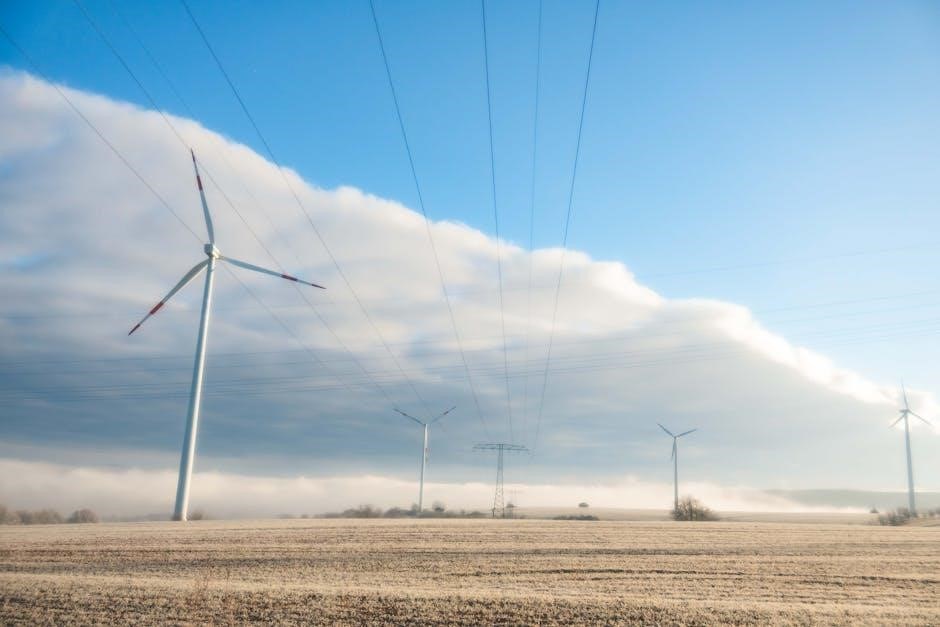
Optimizing Performance
Regular maintenance, proper air filter cleaning, and ensuring unobstructed airflow enhance efficiency. Seasonal checks and managing condensation further optimize performance for consistent cooling and energy savings.
9.1. Proper Usage Tips
For optimal performance, use your Windmill air conditioner as instructed in the manual. Avoid operating it with heat-generating appliances nearby to prevent overheating. Ensure the unit is sized appropriately for your space to avoid overworking. Regularly check and clean the antimicrobial filter to maintain airflow and efficiency. Use the timer function to manage operation hours, reducing unnecessary energy use. Keep the area around the AC clear of obstructions to ensure proper air circulation. Avoid extreme temperature settings to maintain consistent cooling and energy savings. Proper usage extends the lifespan and enhances the overall performance of your Windmill air conditioner.
9.2. Managing Condensation
Condensation is a natural byproduct of air conditioning. Windmill units intentionally retain water to cool internal components, enhancing efficiency. Ensure proper drainage by installing the unit levelly and using the provided drain hose. Regularly inspect for water accumulation and clean the drain pan to prevent blockages. If excessive water accumulates, check for unit damage or installation issues. Midea’s design doesn’t include a drain hole, relying on internal water management. Always follow manual guidelines to handle condensation effectively and maintain your unit’s performance and longevity.
9.3. Seasonal Preparation
Prepare your Windmill air conditioner for seasonal changes by ensuring proper storage and maintenance. Drain any excess water from the unit to prevent buildup and potential damage. Clean the exterior and interior components before storing to maintain hygiene and efficiency. Store the unit in a dry, protected area to avoid exposure to harsh weather. Before reinstalling for the next season, inspect the unit for damage or wear and ensure all parts are securely in place. Proper seasonal preparation extends the lifespan of your Windmill air conditioner and ensures optimal performance when it’s needed again.
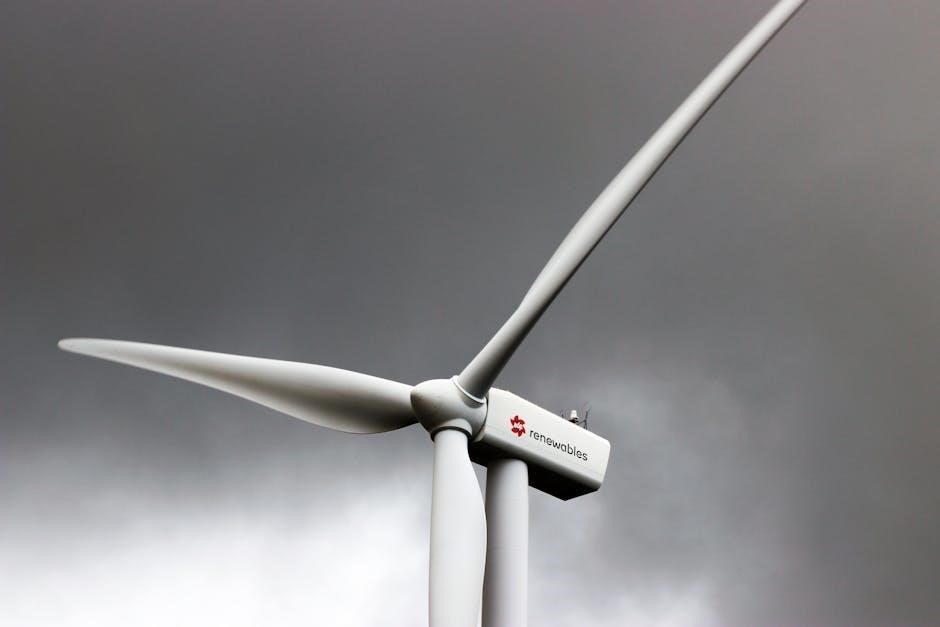
Environmental Benefits
Windmill air conditioners reduce carbon footprint through energy-efficient operation and eco-friendly design, promoting sustainable cooling solutions while minimizing environmental impact and supporting green living initiatives effectively.
10.1. Reducing Carbon Footprint
Windmill air conditioners are designed to minimize environmental impact by offering energy-efficient cooling solutions. Their eco-friendly design reduces energy consumption, lowering greenhouse gas emissions. By utilizing advanced technology and sustainable materials, these units promote greener living. Proper installation and maintenance, as outlined in the manual, ensure optimal performance, further reducing carbon footprint. This approach aligns with global efforts to combat climate change, making Windmill air conditioners a responsible choice for environmentally conscious consumers.
10.2. Eco-Friendly Design
Windmill air conditioners feature an eco-friendly design that prioritizes sustainability and environmental responsibility. Built with energy-efficient components and recyclable materials, these units minimize waste and reduce environmental impact. The antimicrobial filter not only improves air quality but also reduces the need for frequent replacements, further supporting eco-conscious usage. By integrating innovative cooling technologies, Windmill ensures that their air conditioners operate effectively while maintaining low energy consumption. This design philosophy reflects Windmill’s commitment to creating products that benefit both users and the planet, aligning with global sustainability goals.
